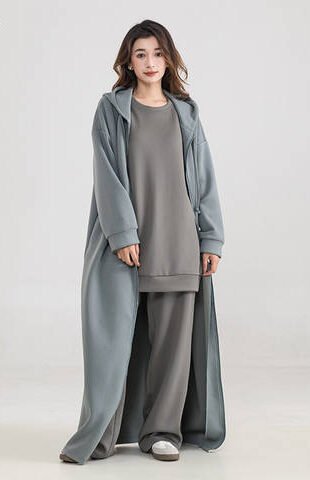Introduction
In an era where fashion is constantly evolving and personal expression reigns supreme, the abaya stands out as a powerful symbol of modesty, cultural pride, and timeless elegance. Originally worn across the Arabian Peninsula as a cloak for modesty and religious observance, the abaya has gracefully evolved into a modern fashion statement embraced by women of diverse backgrounds around the world. What was once a traditional garment has now become a canvas for artistic design, personal identity, and global fashion trends.
The abaya is more than just a piece of fabric—it tells a story. It reflects deep-rooted cultural values, honors a long-standing heritage, and now showcases innovation through contemporary cuts, colors, and embellishments. From minimalist black robes to boldly embroidered capes, from everyday practicality to luxurious evening wear, the abaya continues to blend functionality with beauty in a way that few garments can.
What makes the abaya truly special is its multidimensional appeal. For some, it’s a religious or spiritual choice. For others, it’s about celebrating heritage or simply enjoying the flowy, elegant comfort it provides. And increasingly, it’s being embraced as a symbol of empowerment—a way to assert that modesty and fashion do not have to be mutually exclusive. The abaya proves that you can be covered and confident, modest yet modern.
As fashion becomes more inclusive, and modest wear makes waves in mainstream style, the abaya has emerged as a global garment—adored for its elegance, appreciated for its versatility, and respected for its roots. Whether worn in the bustling streets of Riyadh, the fashion districts of Paris, or the urban corners of London, the abaya transcends boundaries and continues to redefine what it means to be fashionable in today’s world.
❓ Frequently Asked Questions (FAQ)
Q1: What is the origin of the abaya?
A: The abaya originated in the Arabian Peninsula and has been worn by Muslim women for centuries as a symbol of modesty. Historically, it was designed to be a loose, flowing garment that covered the body, reflecting both cultural and religious values.
Q2: Is the abaya only worn for religious reasons?
A: No. While many women wear the abaya as part of their religious observance, it has also become a fashion-forward garment. Today, women wear abayas to express personal style, comfort, and cultural pride, regardless of their religious affiliation.
Q3: Can non-Muslim women wear abayas?
A: Absolutely. The abaya is appreciated globally as a symbol of modest fashion. Non-Muslim women often wear abayas for their aesthetic appeal, comfort, and elegance, especially in multicultural or modest fashion settings.
Q4: How is a modern abaya different from a traditional one?
A: Traditional abayas were usually black and plain, focusing on modesty and simplicity. Modern abayas come in various fabrics, colors, and styles—ranging from open-front and belted styles to those with intricate embroidery, lace, or prints—making them suitable for formal events, casual outings, and even workwear.
Q5: What types of fabrics are used in abayas today?
A: Modern abayas are made from a wide variety of fabrics including nida, crepe, chiffon, satin, cotton, silk, velvet, and even linen. The choice depends on the season and occasion. Lightweight fabrics are ideal for summer, while rich textures like velvet are perfect for evening or winter wear.
Q6: How do I style an abaya for a contemporary look?
A: You can elevate your abaya look by accessorizing with belts, statement jewelry, elegant shoes, and stylish handbags. Many women also layer their abayas over jeans, maxi dresses, or jumpsuits to create modern, street-style looks.
Q7: Is the abaya still considered culturally respectful even with modern designs?
A: Yes. Modern abayas are designed to respect cultural and religious values while allowing room for creativity and individuality. Designers today are careful to maintain the garment’s core modesty while exploring style elements like cuts, embroidery, or layering.
✅ Conclusion
The abaya is a remarkable fusion of modesty, culture, and fashion—a garment that beautifully balances traditional values with modern expression. It’s a piece that tells a story of identity, empowerment, and elegance. From its historical roots in the Middle East to its contemporary presence on international runways and streetwear scenes, the abaya has proven its place in the global fashion conversation.
What makes the abaya so enduring is its adaptability. It has the power to preserve cultural identity while evolving with time. Whether you’re someone who wears it for religious reasons, personal style, or cultural connection, the abaya allows you to feel both dignified and stylish. Its flowing silhouette, graceful movement, and endless styling possibilities make it a wardrobe essential for today’s modern woman.
At mehrukhan.shop, we celebrate this unique harmony of heritage and innovation. Our collection of abayas is designed for women who want to honor tradition without compromising on trend. Explore pieces that are elegant, versatile, and rooted in culture—because modesty is not a limitation, it’s a bold and beautiful choice.

